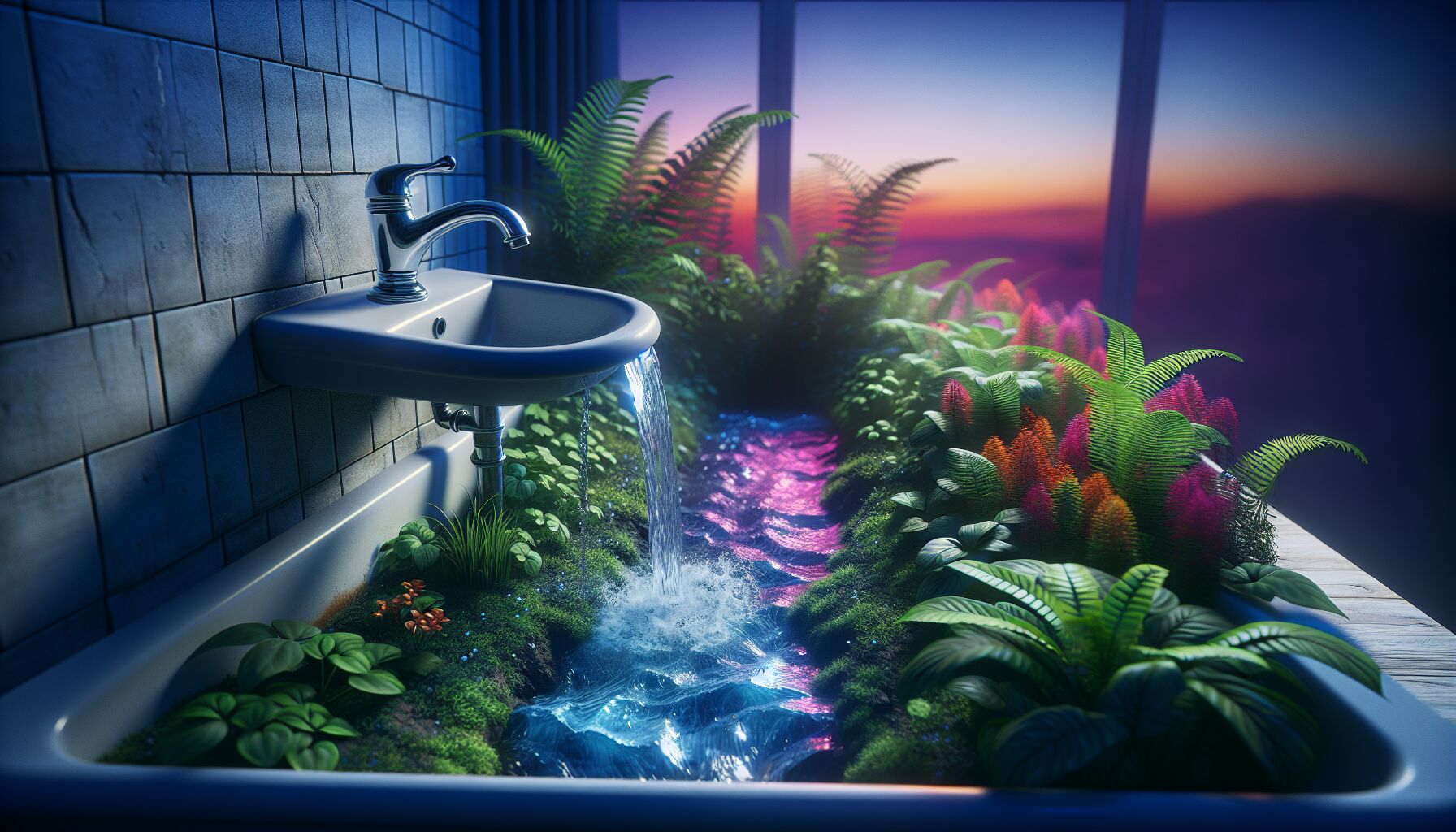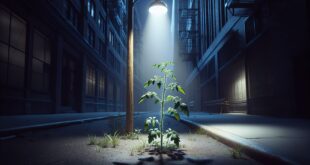Water falling from the sky is free—but most of us let it rush off our roofs, down the gutter, and into the storm drains like it’s worthless. That’s not just a missed opportunity—it’s a wound to home efficiency and long-term water conservation. Rainwater harvesting isn’t some futuristic gadgetry or survivalist gimmick. It’s an ancient, down-to-earth way of honoring what’s already being given.
The basic idea? Catch the rain where it falls. A simple barrel under a downspout can save thousands of gallons a year. More elaborate systems—with first-flush diverters, storage tanks, and inline filters—can store enough water to irrigate your garden through a dry season and even run your laundry during a drought. And the beauty of it? You’re redirecting a gift that would’ve otherwise been wasted—and reducing your dependency on treated municipal water in the process.
“The best time to plant a tree was 20 years ago. The second-best time is now.”
— Chinese proverb
Same goes with setting up rain capture. Even if you’ve lived decades without it, starting now shifts your home’s rhythm with nature. Because collecting rainwater isn’t just a utility hack—it’s a practice of *reconnection*. You start watching the skies differently, planning around weather, tending your tanks with a bit more mindfulness.
Here’s how to get started without overcomplicating it:
- Assess your roof catchment – Every 1,000 square feet of roof can collect over 600 gallons from just an inch of rain. Yeah, that much.
- Choose your collection system – Basic barrels (~55 gallons), or storage tanks (up to several thousand gallons) made of food-safe plastic or ferrocement for larger projects.
- Install a screen – It’s a mosquito thing. Also, leaf debris. Trust me, future-you will be thankful.
- Integrate a first-flush diverter – That first burst of rain after a dry spell? It’s got rooftop grime you don’t want in your tank.
Yes, there are codes and laws about water harvesting in some places. States like Texas and Arizona often encourage it, while others need a bit more finesse and paperwork. But momentum is shifting. For folks drawn toward sustainability, this isn’t just about saving on water bills—it’s about reclaiming autonomy in a system increasingly marked by scarcity and control.
Let me explain something that’s easy to overlook: rainwater is *soft water*. That means it lacks the mineral buildup you get with city supply. Gardens like it better. Houseplants love it. Even your laundry machine hums a little smoother. In an off-grid or hybrid setup, this can tie directly to your plumbing through gravity-fed systems with minimal energy input. Simple valves, overflow outlets, and filters—no high tech wizardry needed.
Check out organizations like HarvestingRainwater.com or this guide from U.S. Department of Energy to deepen your setup as your needs evolve.
And here’s the deeper truth under it all—this isn’t just about saving water. It’s about shifting from extraction to reciprocity. About remembering that it’s not “my roof, my yard” but *this patch of Earth I get to care for*. When you catch rain, you’re literally holding life in your hands. Isn’t that worth doing well?
Efficient water fixtures and appliances
From faucets that trickle precision to toilets that whisper rather than roar, the modern home has no excuse for waste — not when the tools for absolute water conservation are right at our fingertips. And yet, millions of gallons silently vanish every year through outdated fixtures and thoughtless habits. Truth is, your home’s plumbing can either be a leaky liability or a quiet partner in sustainability. It depends on what you’re working with — and how often you pay attention.
Start small, but think smart. A standard showerhead can guzzle up to 5 gallons per minute. Switch to a WaterSense-labeled model, and you’re looking at around 2 GPM or less — without sacrificing pressure. (Yeah, the myth that low-flow means weak flow? Let that one go.) Faucets follow the same principle. Aerators are a dirt-cheap fix that screw right into your existing setup and make a tangible dent in usage. According to the EPA’s WaterSense program, homes that swap in efficient plumbing fixtures can save nearly 13,000 gallons a year. That’s not a drop in the bucket — it’s a shift toward genuine, everyday sustainability.
“What you do makes a difference, and you have to decide what kind of difference you want to make.”
— Jane Goodall
Alright, let’s talk toilets. They’re not glamorous, but they matter. A single flush from an old toilet can swallow up to 6 gallons. High-efficiency dual-flush models bring that down to about 1.3 gallons — and with a gentle push, you decide whether it’s a “light” or “full” job. It’s a simple ritual shift with long-term impact. No tech degree required.
Dishwashers, too, have come a long way, and here’s where practicality meets real sustainability. ENERGY STAR–certified machines use as little as 3.5 gallons per cycle — less than handwashing the same load. As wild as that sounds, it’s true when done properly. Just don’t rinse dishes beforehand like it’s 1978. Today’s machines are designed to sense food soil and adjust accordingly.
Washing machines? Same deal. Front-loading units usually outperform their top-loading ancestors both in water and energy savings. Look for models with adjustable load sensors — so you’re not flooding the drum for a few shirts and some socks. And while we’re here, just a nudge: do your laundry in full loads whenever possible. It’s not just mindful — it’s efficient living, woven into routine.
There are also those lesser-known gadgets — unsung heroes for home efficiency:
- Leak detectors — Water alarms under sinks or behind toilets can catch slow drips before they become expensive floods.
- Smart irrigation controllers — These monitor weather patterns and soil moisture so you’re not watering when it’s already rained.
- Foot pedal valves for kitchen sinks — Great for hands-free operation and stopping water flow instantly while multitasking.
Now, none of this matters if the people using these tools treat water like it’s infinite. That’s the spiritual thread running below all of this: awareness. Deciding, every day, to not just “install efficient fixtures” but to *act* efficiently. Watch your habits: brushing with the tap running? Excessive car washing? All of it adds up, not just against your bill, but against our wider shared aquifers.
You feel it in older homes sometimes — the drip from the bathroom sink, the toilet that ghost-flushes at night. These aren’t just tiny flaws; they’re symptoms of a household out of step with its means. And in a world inching toward more frequent droughts, there’s dignity in taking care of the little things. You’re not nitpicking — you’re tending to your home like a farmer checks their fence. Quiet, necessary upkeep.
And when you do the math — yes, literal calculations — it often works in your favor. Here’s a quick look:
| Fixture/Appliance | Old Usage (Gallons) | Efficient Model | Annual Water Savings |
|---|---|---|---|
| Toilet (per flush) | Up to 6 gallons | 1.28 gallons or less | ~13,000 gallons per household |
| Showerhead (per minute) | 4–5 gallons | 1.75–2.0 gallons | ~2,900 gallons per person |
| Washing Machine (per load) | Older top loaders: 40+ gallons | High-efficiency front loader: ~15–20 gallons | ~7,000 gallons per household |
There’s no need to rip your house apart or spend thousands upfront. Swap what you can, when you can. Prioritize. The toilet that runs? Fix it. That vintage faucet that looks beautiful but runs like a river? Change it or retrofit it. Saving water isn’t just altruism — it’s self-respect. And over time, it builds a home that hums with quiet harmony.
Visit the Home Water Works site from the Alliance for Water Efficiency if you’re ready to dig deeper with tailored tools and water footprint calculators.
You know what’s wild? Most of these changes double as energy savings too. Less hot water? Lower electric or gas bills. Shorter showers? Time reclaimed. Bit by bit, you edge closer to a home that’s not part of the problem — but part of the pattern Nature intended.
And that’s the enduring thread weaving through it all: conscious choice. The tools are here — what flows next is up to you.
Greywater reuse strategies
 When it comes to water conservation, nothing ties the loop tighter than reusing what you’ve already paid for. That’s the promise of greywater — not blackwater from toilets or kitchen sinks, but lightly used water from showers, bathroom sinks, laundry, and tubs. It’s not pristine, but it’s not waste either. It floats in that middle realm: useful, overlooked, and oddly sacred when you treat it with some care.
When it comes to water conservation, nothing ties the loop tighter than reusing what you’ve already paid for. That’s the promise of greywater — not blackwater from toilets or kitchen sinks, but lightly used water from showers, bathroom sinks, laundry, and tubs. It’s not pristine, but it’s not waste either. It floats in that middle realm: useful, overlooked, and oddly sacred when you treat it with some care.
Now, before you cringe or imagine murky buckets sloshing through your hallway, let’s clear the air. Greywater systems range from ultra-simple to thoroughly engineered, and most folks can start using them in small, non-intrusive ways. Think of it like this: every warm shower you take could also be watering your fruit trees, hydrating garden beds, or nourishing native landscaping. You’re not “wasting less” — you’re directing value with intention.
“Nothing is lost, nothing is created, everything is transformed.”
— Antoine Lavoisier
That old law of conservation of matter? It applies to greywater too. You’re not tossing water down the drain; you’re returning it to the cycle, slightly altered but still deeply useful. And here’s where sustainability becomes personal — because once you’ve seen a plum tree flourish from your family’s bathwater, it’s hard to go back to thoughtless waste.
Let’s break it down:
- Manual reuse (bucket-style) — Yep, it’s that straightforward. Keep a five-gallon bucket in the shower to catch warm-up water or leftover bathwater, then use it to flush toilets or water plants. Low barrier, high impact.
- Laundry-to-landscape systems — These setups reroute rinse cycle water from your washing machine to outdoor mulch basins. It’s gravity-fed, code-legal in many areas (like California), and needs no tank or filtration if you use the right detergents. Look up Greywater Action for guides and tools.
- Plumbed-in systems — More complex but powerful. These involve routing your bathroom sink or shower drains into a collection tank with filters, then pumping the water to specific zones in the yard. Ideal for new builds or major remodels, and often works best with drought-hardy native plants.
Whether simple or complex, all greywater systems speak the same language: use it twice before letting it go. It’s a rhythm, not a rule. You start thinking relationally — how your body’s care (a shower, a shave) can nourish berry bushes. How the way you clean can feed the land instead of draining it.
A quick note on soaps and shampoos: this part matters more than folks assume. What you put on your skin or clothes goes straight into your soil with greywater. Ditch anything with synthetic fragrances, antibacterial agents like triclosan, or salts that can build up in plant roots. Brands like Biokleen, Dr. Bronner’s (in moderation), and Oasis are often recommended for greywater setups. And hey — isn’t simplifying your product shelf a quiet sort of liberation anyway?
Now let’s address a common hesitation: legality. Can you actually do this? In many places, yes — especially for laundry-to-landscape systems. California, Arizona, Oregon, and others have adopted code changes making it easier for homeowners to install simple greywater setups without permits, as long as it’s done safely and used on the surface, not sprayed or stored long-term. That said, always check local codes. This isn’t red tape; it’s just ensuring your system doesn’t become a stagnant mess downstream.
Here’s a surprising benefit too: better soil health. Greywater isn’t just hydration — it brings a subtle nutrient profile and frequency of micro-doses that can soften dry soil, improve microbial life, and stabilize moisture levels through hotter months. Plus, sub-surface irrigation helps reduce evaporation, especially when paired with mulch, which acts like a thermal blanket for your roots.
You know what else? These systems build what you might call *emotional resilience*. When you’re physically connected to how your water cycles — when you see your used shower water greening your peach tree or hear the gentle glug of water moving through mulch — it instills a kind of reverence that no lecture or eco-sticker can replace. You start treating water not as a convenience, but as life itself — on loan, and not to be squandered.
Let’s not pretend every home has the layout or budget for elaborate pipe work. But greywater use can still fit into tiny apartments (hello, bucket collection), suburban backyards, homesteads, and everything in between. It just asks for awareness — that quiet habit of checking, asking, considering. Before you let something run down the drain, pause.
Even mainstream agencies like the EPA now include greywater in their green infrastructure guidelines — a clear nod that this isn’t fringe thinking. It’s just common sense, returning home.
And really, that’s what this is about — home efficiency in its truest form: not gadgets, but harmony. Not rules, but rhythms. Greywater systems don’t just catch wastewater; they catch potential. They take what’s already passed through us — literally — and let it give again.
So next time you’re brushing your teeth or rinsing out the washcloth, maybe ask yourself: where else could this go? Because nothing truly leaves — it just shifts form. And a sustainable home is one that listens to those shifts. Quiet, humble, and endlessly alive.
 DS Haven In Light Of Things
DS Haven In Light Of Things






